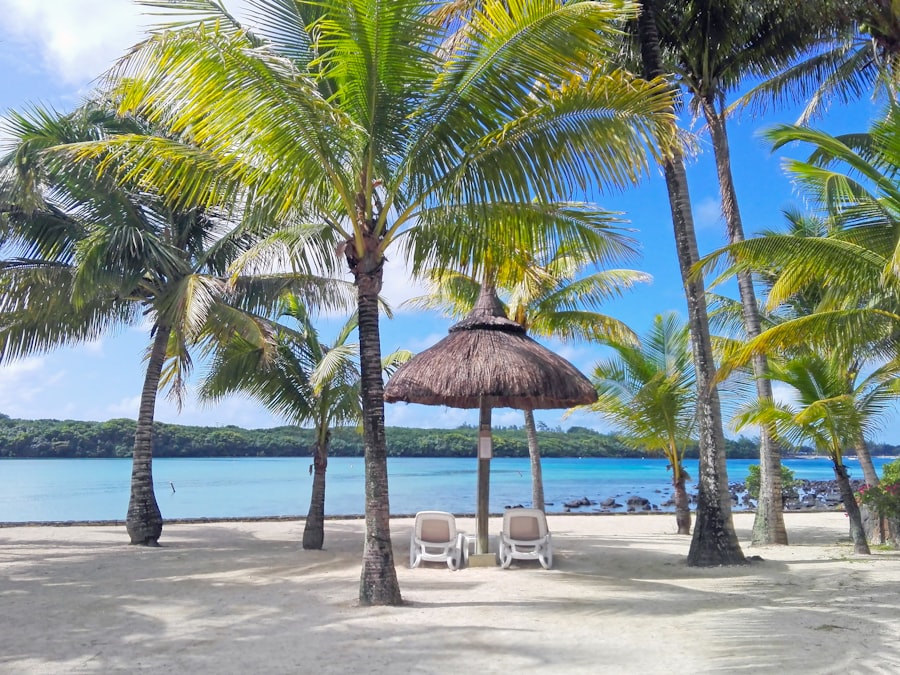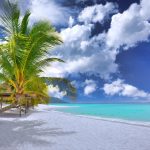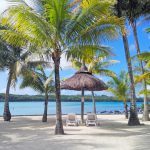Unveiling the Beauty of Palawan: A Journey with PH189
Description
Palawan, often referred to as the “last frontier” of the Philippines, is a breathtaking archipelago that boasts some of the most stunning natural landscapes in the world. Its unique geography, characterized by limestone cliffs, lush jungles, and pristine beaches, creates a picturesque setting that captivates travelers from all corners of the globe. The island is home to the Puerto Princesa Subterranean River National Park, a UNESCO World Heritage Site, which features a remarkable underground river that flows through a stunning cave system.
This river is not only a natural wonder but also a vital ecosystem that supports diverse flora and fauna, making it a must-visit for nature enthusiasts. Beyond the underground river, Palawan is dotted with numerous other natural attractions. The Bacuit Archipelago, for instance, is renowned for its dramatic karst formations and crystal-clear waters.
Island-hopping tours in this region reveal hidden lagoons, secret beaches, and vibrant coral reefs teeming with marine life. El Nido and Coron are two of the most popular destinations within this archipelago, where visitors can explore lagoons like the Big Lagoon and Small Lagoon, each offering a unique glimpse into the island’s geological wonders. The breathtaking views from the cliffs overlooking these lagoons are nothing short of spectacular, providing an unforgettable backdrop for photography and relaxation.
Key Takeaways
- Palawan is home to stunning natural wonders such as the Puerto Princesa Subterranean River National Park and the limestone cliffs of El Nido.
- The underwater paradise of Palawan offers opportunities for snorkeling, diving, and exploring vibrant coral reefs and diverse marine life.
- Immerse yourself in the rich culture and history of Palawan by visiting the indigenous communities and learning about their traditions and heritage.
- Savor the local cuisine of Palawan, which includes fresh seafood, exotic fruits, and traditional Filipino dishes with a unique Palawan twist.
- Embrace sustainable tourism in Palawan by supporting eco-friendly accommodations, responsible tour operators, and conservation efforts to protect the natural beauty of the region.
Exploring the Underwater Paradise
Encountering Marine Life
Divers can encounter an incredible array of marine species, including colorful clownfish, majestic sea turtles, and even the elusive dugong.
World-Class Dive Sites
The Tubbataha Reefs Natural Park, a UNESCO World Heritage Site, is a premier diving destination that attracts divers from around the world. This remote marine sanctuary offers pristine dive sites where one can witness the beauty of untouched coral gardens and an abundance of marine life. Coron is famous for its wreck diving sites, where World War II shipwrecks lie submerged in crystal-clear waters.
A Unique Diving Experience
These wrecks have become artificial reefs, attracting a myriad of marine species and providing divers with a unique opportunity to explore history beneath the waves.
Each dive in Palawan reveals new wonders, making it a haven for both novice and experienced divers alike.
Immersing in the Rich Culture and History

Palawan’s cultural tapestry is as rich as its natural beauty, shaped by various indigenous groups and historical influences over centuries. The indigenous people of Palawan, such as the Tagbanua and Batak tribes, have lived in harmony with nature for generations. Their traditional practices, beliefs, and crafts offer visitors a glimpse into a way of life that is deeply connected to the land and sea.
Engaging with these communities provides an opportunity to learn about their customs, traditional fishing techniques, and sustainable practices that have been passed down through generations. The historical significance of Palawan is also evident in its colonial past. The city of Puerto Princesa serves as a gateway to exploring this history, with landmarks such as Fort Santa Isabel and the Immaculate Conception Cathedral reflecting Spanish colonial architecture.
The city also hosts the Palawan Heritage Center, where visitors can delve into the island’s history through exhibits showcasing artifacts from various periods. Additionally, the influence of World War II is palpable in places like Coron, where remnants of battles fought still linger in the form of war memorials and preserved wrecks. This blend of indigenous culture and colonial history creates a rich narrative that enhances the travel experience in Palawan.
Savoring the Local Cuisine
| City | Local Dish | Popular Restaurant | Price Range |
|---|---|---|---|
| Paris | Croissant | Le Petit Cler | |
| Tokyo | Sushi | Sukiyabashi Jiro | |
| Rome | Pasta Carbonara | Da Enzo al 29 | |
| Bangkok | Pad Thai | Thip Samai |
The culinary landscape of Palawan is a delightful fusion of flavors influenced by its diverse cultures and abundant natural resources. Seafood takes center stage in many local dishes, thanks to the island’s proximity to rich fishing grounds. Grilled fish served with a side of fresh vegetables or coconut rice is a staple that reflects the island’s coastal lifestyle.
One cannot visit Palawan without trying the famous “Tamilok,” a delicacy made from woodworms found in mangrove trees. Often served raw with vinegar or calamansi juice, this dish may challenge adventurous eaters but offers a unique taste of local culture. In addition to seafood, Palawan’s cuisine features an array of tropical fruits and vegetables that thrive in its fertile soil.
Dishes like “Kare-Kare,” a rich oxtail stew made with peanut sauce, showcase local ingredients while highlighting Filipino culinary traditions. Street food stalls offer an array of snacks such as “lumpiang shanghai” (spring rolls) and “balut” (fertilized duck egg), providing an authentic taste of everyday life in Palawan. Dining in local eateries not only satisfies hunger but also immerses visitors in the vibrant atmosphere of Filipino hospitality.
Sustainable Tourism in Palawan
As tourism continues to grow in Palawan, there is an increasing emphasis on sustainable practices to preserve its natural beauty and cultural heritage. Local government initiatives aim to promote eco-friendly tourism that benefits both visitors and residents alike. For instance, many tour operators now offer eco-tours that focus on responsible travel practices, such as minimizing waste and protecting marine ecosystems.
These tours often include educational components that raise awareness about environmental conservation among tourists. Community-based tourism initiatives have also gained traction in Palawan, allowing local communities to benefit directly from tourism while preserving their cultural identity. Visitors can participate in programs that support local artisans or engage in conservation efforts such as beach clean-ups or tree planting activities.
By choosing sustainable options when traveling in Palawan, tourists contribute to the preservation of this paradise for future generations while enjoying an authentic experience that connects them with the local community.
Making Memories with PH189

For those seeking an unforgettable adventure in Palawan, PH189 offers curated experiences that highlight the island’s natural beauty and cultural richness. This travel company specializes in creating personalized itineraries that cater to individual preferences, ensuring that every traveler can explore Palawan at their own pace. Whether it’s an island-hopping tour through El Nido’s stunning lagoons or a cultural immersion experience with indigenous communities, PH189 provides opportunities for meaningful connections with both nature and people.
One standout offering from PH189 is their commitment to sustainable tourism practices. By partnering with local guides and businesses, they ensure that tourism benefits the communities they visit while minimizing environmental impact. Travelers can engage in activities such as snorkeling in protected marine areas or participating in community-led conservation projects, all while creating lasting memories in one of the world’s most beautiful destinations.
With PH189 as a guide, visitors can explore Palawan not just as tourists but as responsible travelers who leave a positive mark on this enchanting island.
If you’re interested in learning more about technology and security, you may want to check out the article com/2018/02/10/security-elite-elimina-virusantivirusacelerador/’>Security Elite: Elimina Virus, Antivirus, Acelerador on the PH189 website.
This article discusses the importance of protecting your devices from viruses and malware. It provides tips on how to keep your devices safe and secure. It’s a great read for anyone who wants to learn more about cybersecurity.
FAQs
What is Palawan?
Palawan is an island province in the Philippines located in the Mimaropa region. It is known for its stunning natural beauty, including pristine beaches, crystal-clear waters, and lush forests.
What are the popular tourist attractions in Palawan?
Some of the popular tourist attractions in Palawan include the Puerto Princesa Subterranean River National Park, El Nido’s limestone cliffs and lagoons, Coron’s shipwrecks and diving spots, and the Tubbataha Reefs Natural Park.
What is the best time to visit Palawan?
The best time to visit Palawan is during the dry season, which typically runs from November to May. This is when the weather is most favorable for outdoor activities and beach excursions.
What are the activities to do in Palawan?
Visitors to Palawan can enjoy a variety of activities such as island hopping, snorkeling, diving, kayaking, hiking, and exploring the local culture and cuisine.
How do I get to Palawan?
Travelers can reach Palawan by flying into Puerto Princesa, the capital city, or by taking a ferry from Manila or other nearby islands. Once in Palawan, there are various transportation options to reach different parts of the province.




